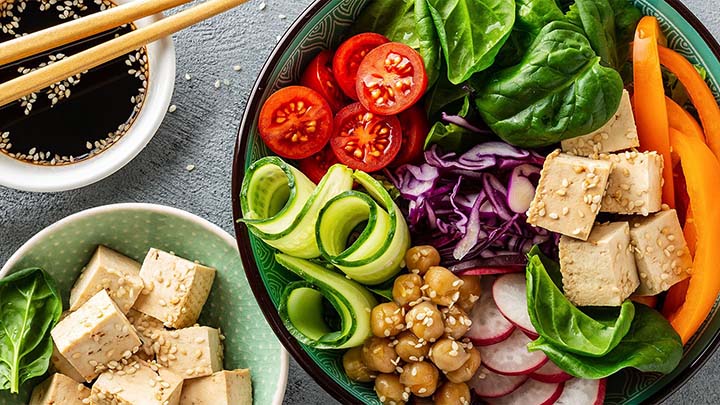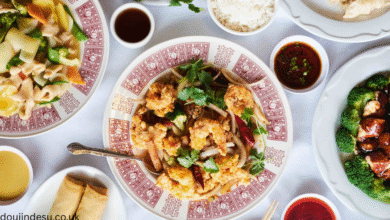Candida Diet: A Comprehensive Guide to Reclaiming Your Health

In today’s world, where health and wellness have taken center stage, various diets claim to offer numerous benefits. One such diet that has gained attention is the ‘Candida Diet.’ Is the Candida Diet healthy, and how does it work? We will examine the Candida Diet’s purpose, benefits, and how to follow it effectively in this comprehensive guide.
What is Candida?
Candida overgrowth can cause several health problems, including digestive issues, fatigue, and joint pain. Addressing the underlying cause can help ease symptoms of candidiasis and prevent recurring infections. Many types of fungi live in and on the human body, including the genus of yeasts known as Candida.
Foods to Avoid on the Candida Diet
The diet involves avoiding high-sugar foods, refined grains, and processed foods. This means bidding farewell to sugary snacks, sweetened beverages, and white bread. Here’s a list of foods to avoid in a Candida diet:
- Sugary Foods: This includes candies, cookies, and cakes. High sugar intake can feed Candida overgrowth.
- Refined Carbohydrates: Avoid refined carbohydrates such as white bread, rice, and pasta since they quickly turn into sugar.
- Processed foods: They can disrupt gut health by containing hidden sugars, unhealthy fats, and additives.
- Fruit Juices: While fruits are generally healthy, their juices can be concentrated sources of sugar. Moderation is key when it comes to eating whole fruits.
- Sugary Fruits: Natural sugars can be found in mangoes, bananas, and pineapples.
- Alcohol: Alcohol weakens the immune system and contains a lot of sugar.
- Dairy Products: Some dairy, especially those high in lactose should be limited. Opt for lactose-free options if needed.
- Artificial Sweeteners: While artificial sweeteners are low in calories, they can still promote sugar cravings.
- Condiments and Sauces: Ketchup, barbecue sauce, and salad dressings often contain sugar. Choose options with minimal sugar or make your own.
- Vinegar: While small amounts are fine, excessive vinegar consumption can promote yeast growth. Opt for apple cider vinegar in moderation.
- Gluten-Containing Foods: Wheat, barley, and rye contain gluten, which can contribute to inflammation and exacerbate Candida overgrowth.
- Starchy Vegetables: Potatoes, corn, and other starchy vegetables can raise blood sugar levels and feed yeast.
- Caffeine: Excessive caffeine intake can stress the adrenal glands and weaken the immune system, potentially worsening Candida overgrowth.
- Moldy Foods: Foods prone to mold, such as peanuts, should be avoided as they can further disrupt the gut balance.
- Smoked or Processed Meats: These often contain additives and preservatives that can negatively impact gut health.
Foods to Include on the Candida Diet
A Candida Diet emphasizes whole, nutrient-dense foods. Healthy fats, non-starchy vegetables, and low-sugar fruits are among these. Foods like these can balance blood sugar levels and improve gut health.
1. Leafy Greens
The best way to maintain a healthy gut is to consume spinach, kale, and Swiss chard! In addition, they support digestion, boost immunity, and keep candida at bay.
2. Garlic and Onions
Garlic and onions aren’t just the superheroes of flavor; they’re also Candida’s kryptonite. These pungent delights contain allicin, a natural compound renowned for its antifungal properties. Chop, sauté, and savor the victory over candida.
3. Coconut Oil
If Candida were a castle, coconut oil would be the knight in shining armor storming its gates. Packed with medium-chain fatty acids, coconut oil delivers a potent punch against Candida overgrowth. Swap your regular cooking oil for this tropical treasure, and watch your gut flourish.
4. Turmeric
Sprinkle a dash of sunshine on your dishes with turmeric, the golden spice revered for its anti-inflammatory and antifungal benefits. Curcumin, turmeric’s star compound, helps quell inflammation and combat candida.
5. Fermented Foods
Sauerkraut, kimchi, yogurt, and kefir—these aren’t just foods; they’re probiotic reinforcements for your gut’s epic battle. Fermented foods introduce beneficial bacteria, helping to restore balanced gut flora and crowd out the opportunistic Candida.
Steps to Take on Your Candida Diet Journey
Step # 1: Clearing Your Pantry
The first step is to rid your pantry of sugary and processed temptations. This sets the stage for a successful transition to the Candida diet.
Step # 2: Planning Your Meals
Meal planning becomes crucial. Crafting balanced meals that include a variety of vegetables, lean proteins, and good fats can make sticking to the diet easier.
Step # 3: Beating Sugar Cravings
Sugar cravings can be intense initially. Opting for natural sweeteners like stevia can help satisfy those cravings without sabotaging your efforts.
Step # 4: Staying Hydrated
Adequate hydration aids digestion and helps flush out toxins. Herbal teas and infused water can add flavor without the added sugars.
The Benefits It Offers
-
Gut Health Revival
Candida diets can improve gut health, one of their most significant benefits. The diet helps strengthen the immune system and assists digestion by reducing sugar intake.
-
Enhanced Energy Levels
As the diet encourages the consumption of nutrient-dense foods, many people report increased energy levels and improved mental clarity.
-
Skin Clarity
Candida overgrowth has been linked to skin issues like acne and rashes. Following the Candida diet may lead to clearer, healthier skin.
The Common Concerns
-
Is the Candida Diet Sustainable?
While the Candida diet might seem restrictive, many find it manageable in the long run. With time, cravings for sugary foods often diminish, making adherence easier.
-
Can I Have Cheat Days?
Cheat days can undermine the progress you’ve made. It’s best to stay consistent to experience the full benefits of the diet.
-
Will I Lose Weight?
Weight loss can be a natural outcome of following the Candida diet due to reduced sugar and carbohydrate intake. However, the primary focus should be on improving gut health.
Conclusion
Candida diet provides a healthier alternative to sugar and processed foods in today’s world. By eliminating Candida overgrowth-promoting foods and focusing on nourishing whole options, individuals can pave the way for better gut health, increased energy, and a clearer complexion.
FAQs
-
Is the Candida diet suitable for everyone?
The Candida diet is generally safe for most people. However, individuals with specific medical conditions should consult a healthcare professional before making significant dietary changes.
-
Can I ever reintroduce sugary foods?
After successfully following the Candida diet, you can gradually reintroduce certain foods in moderation. Listen to your body’s response and make informed choices.
-
How long does it take to see results?
After starting the Candida diet, many people report improved well-being within a few weeks.
-
Are there any side effects of the Candida diet?
Some individuals might experience mild detox symptoms initially, such as headaches or fatigue. These usually subside as the body adjusts to the new dietary pattern.
-
Where can I find more information about the Candida diet?
A reputable source and a healthcare professional can provide customized guidance, even though this article provides a comprehensive overview.



